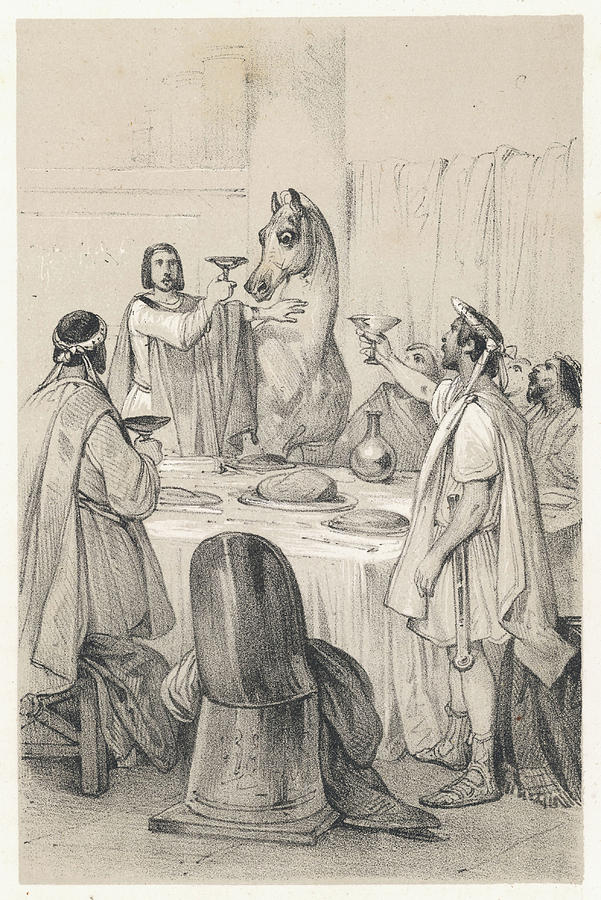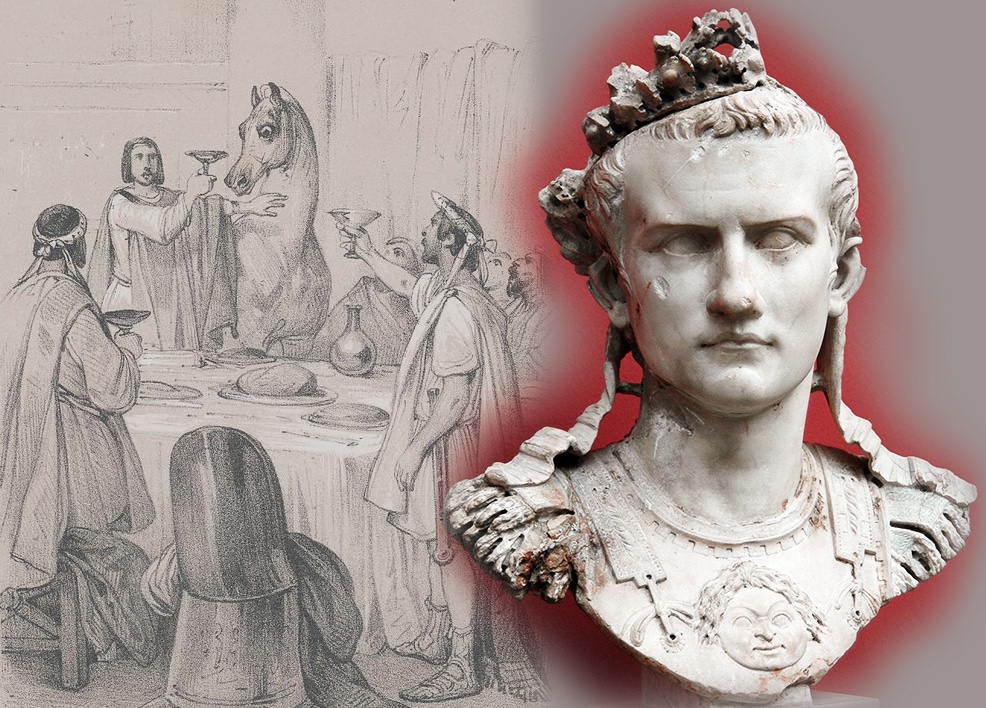Imagine a time when the Roman Empire was ruled by one of its most controversial figures, Emperor Caligula. In this article, we explore the reign of Emperor Caligula: Was Caligula a mad tyrant or a misunderstood leader? See how different perspectives can shape our understanding of this historical figure.
The Reign of Emperor Caligula
The reign of Emperor Caligula, a period that spanned a mere four years from AD 37 to 41, remains one of the most debated and dissected epochs in Roman history. As the third Roman Emperor, Caligula’s rule was marked by a series of events that have both fascinated and horrified historians for centuries. The tales of his excesses, eccentricities, and alleged madness have made him a figure of legend, but how much of what we know is fact, and how much is fiction?
Perspective A – Mad and Unpredictable Ruler
One of the most prevalent views of Caligula is that of a mad and unpredictable ruler. Historians and ancient sources, such as Suetonius and Cassius Dio, paint a picture of an emperor who indulged in extravagant spending, declared himself a god, and even planned to make his horse a consul. These accounts suggest that Caligula’s rule was characterized by erratic decisions, which destabilized the Roman political landscape.

Advantages of this perspective lie in its alignment with numerous primary sources. The tales of Caligula’s supposed debaucheries, his conflicts with the Senate, and his unpredictable behavior are well-documented. This perspective also offers a clear explanation for his assassination in AD 41: a reign marked by such capriciousness would naturally lead to discontent and conspiracies.
However, challenges arise when relying solely on these accounts. Many of the sources were written decades after Caligula’s death and may have been influenced by the political climate of their times. Moreover, the line between fact and sensationalism can often blur, making it difficult to discern the true nature of Caligula’s reign.
Perspective B – Misunderstood Emperor
Another perspective posits Caligula as a misunderstood figure, a victim of historical bias and political propaganda. Some modern historians argue that the extreme accounts of his behavior were exaggerated or even fabricated by his enemies to discredit him. After all, history is often written by the victors.
He had no more chance of becoming emperor than of riding a horse across the Bay of Baiae.
From this viewpoint, Caligula’s actions, which seemed irrational or mad, might have had political or strategic motivations. For instance, his self-deification could be seen as a move to consolidate power and authority, a tactic employed by other rulers throughout history.

The advantage of this perspective is that it encourages a more critical examination of sources and challenges the accepted narratives. It also paints a more nuanced picture of Caligula, suggesting that he might have been a product of his time, facing challenges that required unconventional solutions.
However, this perspective is not without its challenges. While it offers a fresh take on Caligula’s reign, it relies heavily on reinterpreting primary sources, which can be subjective. Additionally, it’s essential to avoid romanticizing or downplaying the negative aspects of his rule.
Conclusion
The reign of Emperor Caligula is a testament to the complexities of history and the challenges of deciphering truth from legend. Whether viewed as a mad tyrant or a misunderstood leader, Caligula’s impact on the Roman Empire is undeniable. As we delve deeper into the annals of history, it’s crucial to approach such figures with an open mind, recognizing the multifaceted nature of their legacies. The enigma of Caligula serves as a reminder that history is not just a collection of facts but a tapestry of perspectives, each offering a unique glimpse into the past.
Do you think Caligula was truly mad or just misunderstood?
Share your thoughts below!
The Mysterious Voyage of Emperor Caligula to Britannia
The reign of Emperor Caligula, the third Roman Emperor, is shrouded in tales of eccentricity, grandeur, and unpredictability. Among the many stories that have intrigued historians is Caligula’s mysterious expedition to the shores of Britannia in AD 40. This voyage, often overshadowed by more sensational tales, offers a glimpse into the ambitions and motivations of this enigmatic ruler.
Journey
In the year AD 40, Caligula, with a grand Roman army in tow, marched to the northernmost boundaries of the Roman Empire. The objective, as chronicled by ancient historians, was to conquer the distant and enigmatic island of Britannia. The Romans had long been fascinated by Britannia, viewing it as a land of mystery and potential wealth.
Unexpected Turn
However, upon reaching the English Channel, something unexpected happened. Instead of embarking on a grand invasion, Caligula ordered his soldiers to collect seashells. These “spoils of the sea,” as he termed them, were then triumphantly paraded back to Rome.


Interpreting the Enigma
Historians have debated the true purpose behind this peculiar act. Some argue it was a symbolic gesture, showcasing Caligula’s dominion over the ocean itself. Others believe it was a calculated move to mock or discipline his army, or perhaps even a result of a last-minute change in military strategy.
Caligula’s Bridge to Glory and Infamy
The reign of Emperor Caligula, spanning from AD 37 to 41, is a tapestry of grand achievements and alleged excesses. One of the most emblematic tales from his rule is the construction of a temporary bridge across the Bay of Baiae. This event, seen through different lenses, either showcases Caligula’s grandeur or his madness.
Bridge of Triumph
In a display of unparalleled opulence, Caligula ordered ships to be anchored and a bridge to be constructed across the Bay of Baiae, a distance of over three miles. This wasn’t just any bridge; it was adorned with precious stones, covered in rich fabrics, and flanked by establishments offering food and drink.
From one perspective, this bridge was a testament to Roman engineering and the empire’s vast resources. Caligula rode across this bridge on his horse, wearing the breastplate of Alexander the Great, symbolizing his might and connection to legendary rulers of the past. It was a statement of power, a demonstration that Rome, under Caligula’s leadership, could achieve the impossible.
Bridge of Folly
However, another viewpoint paints this bridge as a monument to Caligula’s extravagance and possible instability. Critics argue that the construction served no strategic purpose and was a wasteful endeavor. Some ancient sources, like Suetonius, suggest that Caligula built the bridge to refute a prophecy that said
More of → “Figures” ←
FAQ
1. What were the early years of Emperor Caligula’s life like before his ascension to the throne?
Before his reign as emperor, Caligula, born Gaius Julius Caesar Augustus Germanicus, experienced a life filled with both privilege and tragedy. As the grandnephew of Emperor Tiberius, he grew up in the imperial court. However, his family faced the wrath of political intrigues, leading to the deaths of his parents and siblings. These early experiences, marked by luxury and loss, undoubtedly shaped the young prince’s psyche and influenced his later rule.
2. How did Caligula’s relationship with the Roman Senate evolve during his reign?
Initially, Caligula enjoyed the Senate’s support, with many hoping he would restore the Republic’s traditions. However, as his reign progressed, tensions escalated. Caligula’s unpredictable behavior, combined with his perceived disdain for senatorial authority, led to a strained relationship. By the end of his rule, the Senate’s disillusionment was palpable, culminating in conspiracies against the emperor.
3. How did the Roman populace perceive Emperor Caligula during his reign?
Caligula’s relationship with the Roman populace was multifaceted. Early in his reign, he was celebrated for his generous gestures, such as hosting grand games and distributing bonuses. However, as his behavior became more erratic and Rome faced economic challenges, public opinion began to waver. His later acts, perceived as self-indulgent, further alienated many citizens.
4. Were there any significant military campaigns or expansions during Caligula’s reign?
While Caligula’s reign was short, he did engage in military activities. Notably, he initiated campaigns in Germania, aiming to subdue the Germanic tribes. However, these campaigns yielded mixed results. His expedition to Britannia, as highlighted earlier, remains a subject of debate, with some questioning its true intent and success.
5. How did Caligula’s economic policies impact the Roman Empire?
Caligula’s economic policies were marked by heavy spending, funding his lavish projects and games. While this initially boosted the economy, it soon drained the imperial treasury. To replenish funds, Caligula implemented controversial measures, including confiscating estates and increasing taxes. These actions, while temporarily effective, were detrimental in the long run, causing economic strain.
Do you think Caligula was truly mad or just misunderstood?
Share your thoughts below!
This was a delight to read. You show an impressive grasp on this subject! I specialize about Appliances and you…
i think he was just a crazy guy, a victim of his childhood and enviroment
super interesting 🤔
Loved this article, learned a lot!




Leave a Reply